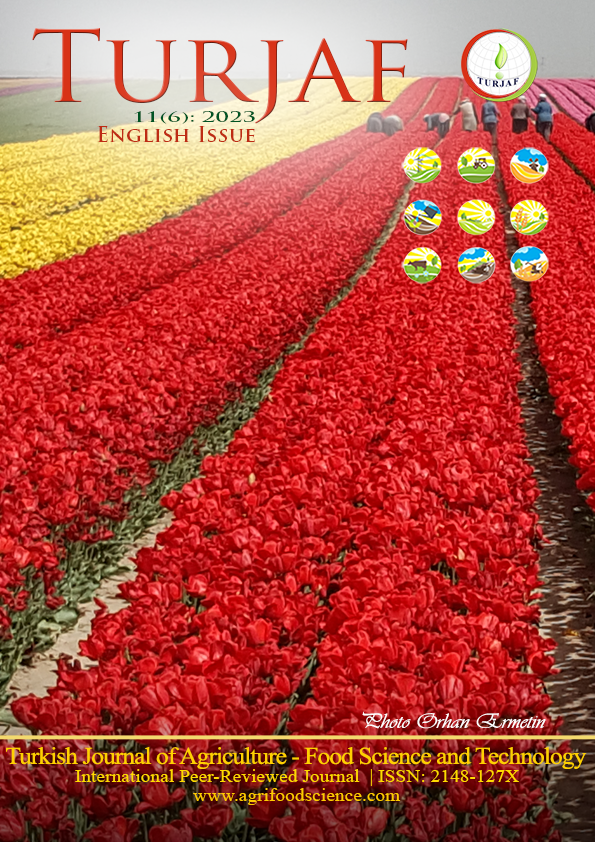Export Competitiveness of Selected Agricultural Products in Kenya
DOI:
https://doi.org/10.24925/turjaf.v11i6.1046-1050.5900Keywords:
Comparative advantage, Market Share Index, Three Vollrath‘s Relative Trade Advantage Indices, Balassa‘s RCA Index, East Africa CommunityAbstract
This study used reports from various bodies to determine the competitiveness of some selected agricultural products between Kenya and other East African Community countries. Agriculture is an important sector in Kenya and the greater East African Community organization as it earns the country foreign exchange through exports. The sector possess considerable potential, and carrying out a competitive study would greatly inform the country’s efforts and policy making processes. The methods used were Market Share Index, Vollrath’s Relative Trade Advantage Indices, and Balassa’s Revealed Comparative Advantage Index. The various countries were compared using calculated indices and ranked accordingly based on their scores and market share percentages. Consequently, Kenya had a competitive advantage and dominated the international markets in tea and crude materials, whereas most East Africa Community member states had a strong comparative advantage in coffee. Generally, to stimulate the agricultural sector and diversify agricultural exports, the Kenyan government and private sector must increase high-level investments in agribusiness and transition from exporting raw materials to value-added products. Developing standard agricultural trade policies would benefit all East African Community member states, which is consistent with their goals.
References
Balassa B. 1965. Trade Liberalization and Revealed Comparative Advantage. The Manchester School of Economic and Social Studies, 33, https://doi.org/10.1111/j.1467-9957.1965. tb00050.x
Dorosh PA, Schmidt E. 2010. The rural-urban transformation in Ethiopia. ESSP working papers 13, International Food Policy Research Institute (IFPRI), 7-8.
FAO, 2019. Kenya. Crop and livestock products trade. Available from http://www.fao.org/faostat/en/#data/TCL (Accessed on 15 March 2022)
Khadan J, Hosein R. 2015. Trade, economic, and welfare impacts of the CARICOM-Canada Free Trade Agreement. Social and Economic Studies, 103-150.
Leishman D, Menkhaus DJ, Whipple GD. 1999. Revealed comparative advantage and the measurement of international competitiveness for agricultural commodities: an empirical analysis of wool exporters. In Western Agricultural Economics Association Annual Meeting, 11-14 July 1999, Fargo, ND (Vol. 7, pp. 11-13).
The Exchange, 2018. Agriculture Exports from East Africa to the World. https://theexchange.africa/industry-and-trade/agribusiness/ agriculture-exports-from-east-africa-the-world/ (Accessed 20 January 2022)
USAID, 2022. Kenya: Agriculture and Food Security. Available from: https://www.usaid.gov/kenya/agriculture-and-food-security (Accessed on 20th January 2022)
US International Trade Administration, 2022. Kenya - Country Commercial Guide. Available from: https://www.trade.gov/ country-commercial-guides/kenya-agribusiness (Accessed on 20th August 2022)
Vollrath T. 1991. A Theoretical Evaluation of Alternative Trade Intensity Measures of Revealed Comparative Advantage. Review of World Economics, 127(2): 265–280.
World Bank, 2019. Kenya Economic Update: Transforming Agricultural Productivity to Achieve Food Security for All. Available from: https://www.worldbank.org/en/country/ kenya/publication/kenya-economic-update-transforming-agricultural-productivity-to-achieve-food-security-for-all (Accessed 25 January 2022)
Downloads
Published
How to Cite
Issue
Section
License
This work is licensed under a Creative Commons Attribution-NonCommercial 4.0 International License.

























